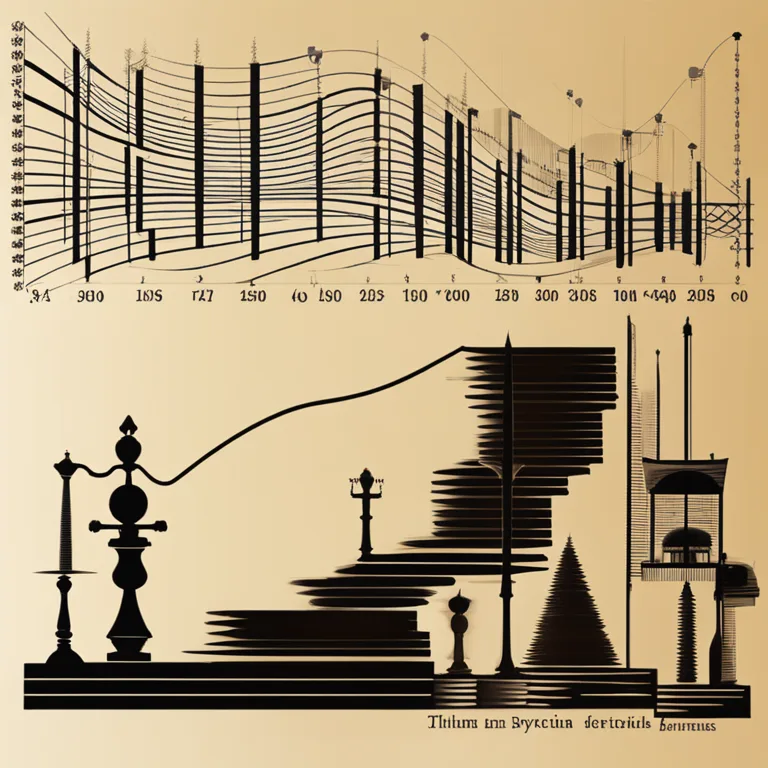
The Rhythms of Life: Biorhythms Explained
A concise overview of biorhythms, their types, significance, and how they might influence daily life.
article by Adrian Wallace
Introduction to Biorhythms
Biorhythms are considered to be innate cycles that govern various biological processes in humans. As the world embraces holistic wellness in 2024, interest in these rhythms has surged. The theory behind biorhythms suggests that our lives are influenced by rhythmic biological cycles that affect our physical, emotional, and intellectual well-being. Although not supported by mainstream science, many individuals turn to biorhythms for personal insight. This article delves into the core aspects of biorhythms to offer a foundational understanding.

Historical Background of Biorhythms
The concept of biorhythms dates back to the late 19th century when Dr. Hermann Swoboda and Dr. Wilhelm Fliess first proposed the idea. Their theories were based on the notion that our physical and emotional states follow a predictable pattern. As the 20th century progressed, biorhythms became more popular, often employed in attempts to enhance performance in various fields. In the digital era, applications and software have been developed to calculate personal biorhythms using birth dates as a starting point, though scientific acceptance remains elusive.

The Three Primary Cycles
Biorhythm theory centers around three primary cycles: the Physical cycle (23 days), the Emotional cycle (28 days), and the Intellectual cycle (33 days). Each of these cycles begins from the day of birth and continues throughout life, oscillating in a sine wave pattern between positive and negative phases. The Physical cycle relates to one's strength, stamina, and coordination. The Emotional cycle corresponds to mood, sensitivity, and creativity, while the Intellectual cycle governs analytical thinking, logic, and decision-making capabilities.

Calculating and Interpreting Cycles
To calculate one's biorhythms, individuals use their birth date as a reference point. Software solutions in 2024 provide more advanced analytics, even integrating AI to track patterns and make personalized predictions. However, interpretations vary, with positive phases considered times of high performance and negative phases serving as a reminder to proceed with caution. While some claim to find these predictions accurate, others regard biorhythms as a placebo, emphasizing the need for empirical research and validation.

Practical Applications in Everyday Life
Proponents of biorhythms often utilize them for planning activities, from personal decisions to scheduling tasks that require peak performance. Some individuals report improved life quality by aligning important endeavors with positive biorhythm phases. However, skeptics question this application given the lack of scientific substantiation. The debate continues, but the fascination with personal rhythm analysis as a tool for self-awareness and potential performance optimization remains strong into 2024 and beyond.
Critical Perspectives and Future Outlook
While biorhythms present an intriguing concept, researchers call for critical examination and robust studies to establish validity. As technology evolves, so might the tools to scrutinize and possibly substantiate biorhythm theories. But for now, in 2024, biorhythms occupy a niche between science and pseudoscience, with an audience eager for insights into their personal cycles waiting for further discovery and understanding.
Published: 12/28/2023
Modified: 12/28/2023
More predictions
Come back here soon to learn more about yourself and your future


Exploring Human Biorhythmic Cycles
Explore the fascinating concept of biorhythms and their influence on physical, emotional, and intellectual faculties in humans.


The Reality Of Biorhythm Compatibility
Unravel the truth behind biorhythm compatibility and its role in personal relationships and daily life.


Biorhythms In Humans Explored
Exploring the concept of biorhythms and their influence on human behavior and physical states.